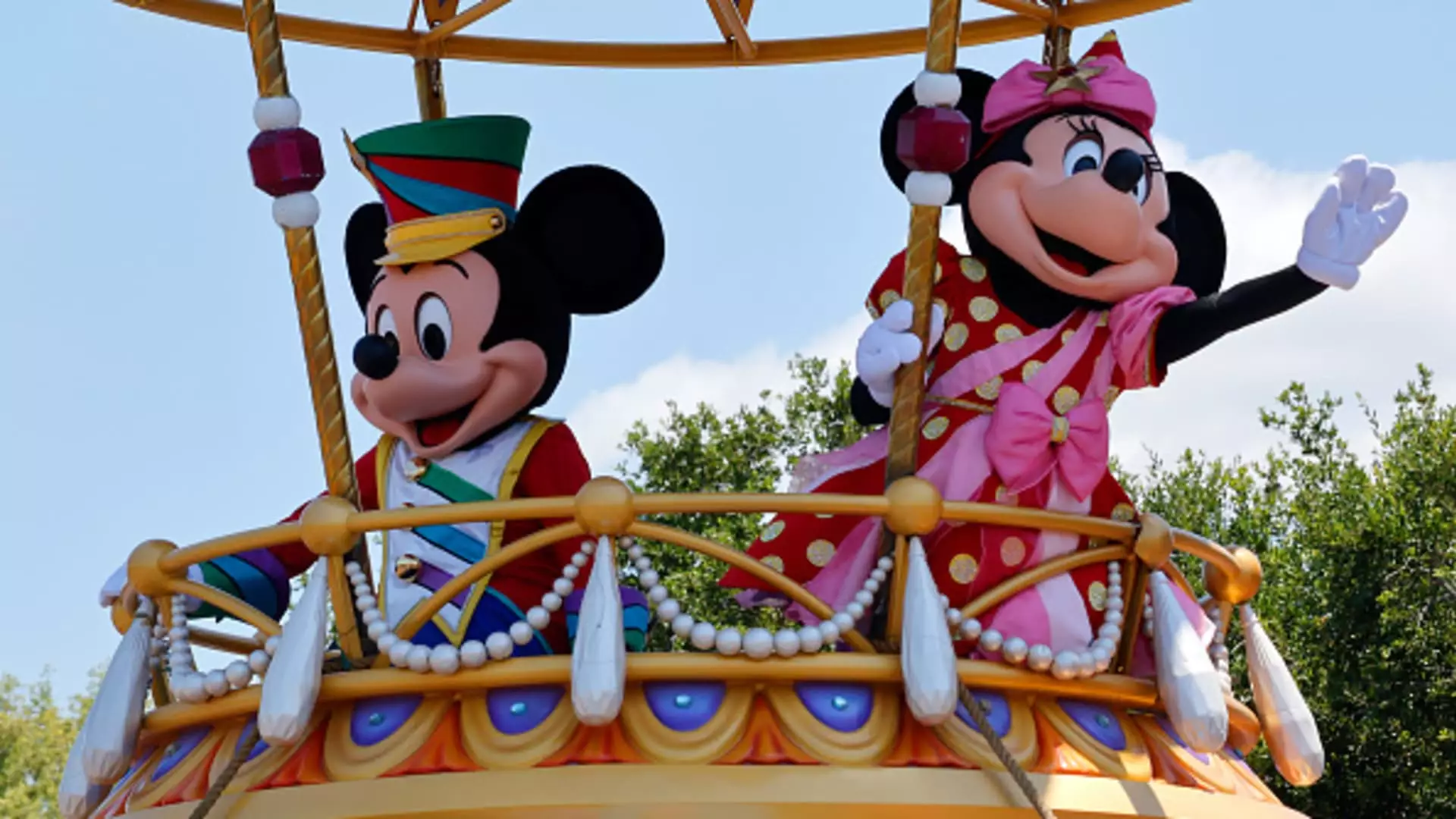After a stretch marked by financial caution and significant strategic shifts, Disney appears to be reclaiming its traditional status as a giant in the entertainment landscape. Under the leadership of CEO Robert Iger, the company has successfully navigated through challenging quarters characterized by cost-cutting and operational reorganization, especially in its streaming division. The recent quarterly earnings report, released on a Thursday, highlights this revitalization, showcasing a remarkable financial performance that offers a promising outlook for the future.
For the fourth fiscal quarter, Disney reported revenue of $22.57 billion, a sizable bump above the anticipated $22.45 billion projected by analysts, as per data gathered by LSEG. This substantial figure serves not only as a testament to the company’s rebound but also reflects the aggressive changes implemented by the management team. Furthermore, adjusted earnings per share (EPS) surged by 39% compared to the previous year, hitting $1.14 and exceeding the estimated $1.10. Unsurprisingly, these strong results triggered a 10% increase in Disney’s stock value.
A Multifaceted Approach to Revenue Generation
Disney’s recent success is not just a matter of financial numbers; it also reflects a strategic overhaul that prioritizes multiple income streams derived from its vast array of intellectual properties. During the earnings call, CEO Iger emphasized the immense value that a successful Disney film can generate today. It’s no longer confined to box office revenue; revenues are increasing across various platforms, such as streaming services, theme parks, consumer products, and even gaming.
As Iger points out, the “multiplier effect” of their content—wherein a successful movie can trigger revenue across several divisions—strengthens the overall economic framework of Disney’s operations. Each hit movie acts as a catalyst for growth across multiple lines, indicating that Disney’s diversified approach is yielding dividends that far exceed traditional revenue models.
The company is forward-looking, revealing a robust lineup of imminent releases slated for 2025. Titles such as “Captain America: Brave New World,” “Lilo and Stitch,” and “Avatar: Fire and Ash” are positioned to attract vast audiences, continuing the legacy of Disney’s storied filmmaking prowess. Furthermore, discussions of launching an ESPN Direct-to-Consumer (DTC) service in the fall of 2024 represent a significant move towards embracing emerging market trends at this critical juncture.
Iger described this ESPN service as incorporating advanced technological features, promising a personalized sports viewing experience to meet the expectations of a digital-savvy consumer base. The implications of this venture could truly reshape the landscape, proving that innovation remains at the heart of Disney’s strategy.
In terms of fiscal projections, Disney management has set a strong tone for what lies ahead, expecting earnings growth in the high single digits in 2025, a significant step up from Wall Street’s more conservative estimate of just over 4%. In terms of operating cash flow, Disney anticipates approximately $15 billion, surpassing analyst predictions of $14.8 billion. Yet, there are cautions, especially surrounding the potential short-term impacts such as closures stemming from hurricanes affecting Florida’s theme parks.
Despite these challenges, the outlook remains optimistic, with anticipated operating income growth across various segments of the business. Notably, the entertainment segment is projected to achieve double-digit percentage growth, while direct-to-consumer platforms are also expected to see significant contributions.
Given its reset strategy focusing on profitability and sustainable growth, Disney appears poised for considerable upside potential. The company’s strength is rooted in its iconic theme parks, which possess undeniable pricing power, alongside its streaming services that are being finely tuned for both efficiency and engagement.
Amidst fierce competition from major players like Netflix and Comcast, Disney has demonstrated an ability to leverage its vast content library and beloved characters to stay relevant. Investors can take heart in Iger’s vision for financial health through ongoing cost reductions and innovative strategies that extend across various business lines.
Disney’s financial return to form, paired with a robust roadmap for future earnings potential, signals that the entertainment titan is not merely bouncing back; it is strategically positioned for long-term sustainability and growth. With an eye on the numbers, the market rightly recognizes its compelling investment narrative, positioning Disney not only as a legacy brand but also as a forward-thinking company ready to meet the demands of a constantly evolving marketplace.

